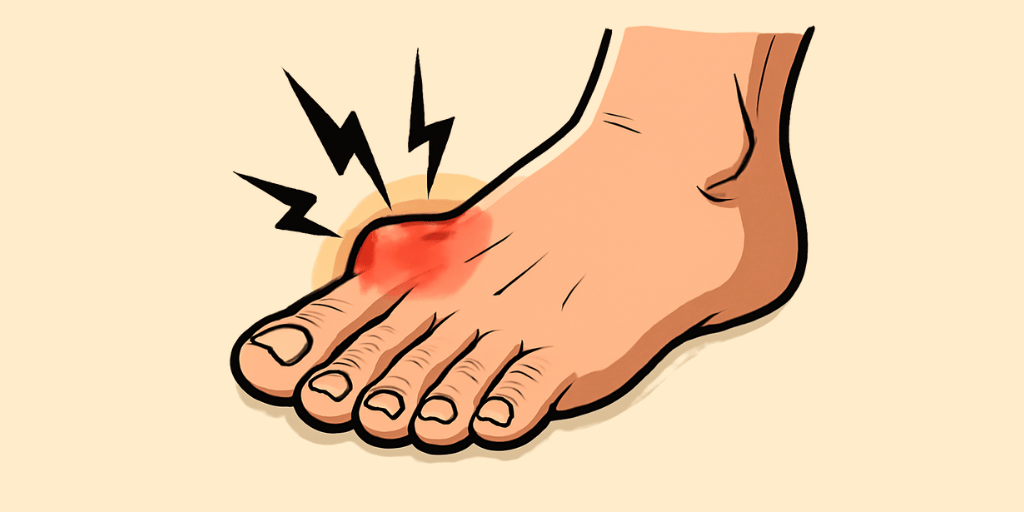Ayurvedic Name: Vatrakt
Description:
Vatrakt is gout, a metabolic disorder resulting from excess uric acid accumulation and aggravated Vata. Symptoms include severe joint pain and swelling. Ayurvedic treatment includes anti-inflammatory herbs, dietary modifications, and Panchakarma therapies.
Signs & Symptoms:
Vatrakt is characterized by Sotha (Swelling) and intense Sula (Pain), typically in the joints, particularly the big toe, due to the accumulation of Vata dosha and Ama (toxins) in the body. The affected joints often feel warm and inflamed, and Shotha (Inflammation) may be accompanied by Rukshata (Dryness) of the skin in the affected area.
The pain can be sharp and severe, especially during an attack. Individuals with Vatrakt often experience Dourbalya (Weakness) and Gaurava (Heaviness) in the body due to the systemic impact of the condition. Agnimandya (Poor Digestion) is commonly seen, leading to digestive disturbances and a reduced appetite.
Diagnosis:
Serum Uric Acid Test or Joint Aspiration
Risk Factors:
- Dietary Factors: Eating foods that are too spicy, salty, or heavy can disturb the digestive system and contribute to Vatrakt (gout). A diet high in purine-rich foods such as red meat, shellfish, and alcohol can elevate uric acid levels in the blood, leading to painful inflammation in the joints.
- Lifestyle Factors: Sedentary behavior, excessive alcohol consumption, dehydration, and lack of exercise can worsen the symptoms of Vatrakt. Emotional stress and inadequate rest can also aggravate the condition.
Complications:
- Joint Deformities (Sandhivakrata / Asthi Vikruti): Long-term inflammation and uric acid crystals can lead to permanent joint damage, causing deformities.
- Kidney Stones (Vrikka Ashmari): Accumulation of uric acid crystals in the kidneys can form painful kidney stones.
- Osteoporosis (Asthi Kshaya): Chronic inflammation and uric acid buildup can weaken bones, increasing the risk of fractures.
- Heart Disease (Hridaya Roga): Persistent inflammation due to gout can raise the risk of cardiovascular diseases like heart attacks and strokes.
- Tendinitis (Sira Shula): Inflammation of tendons due to uric acid deposits, leading to pain and limited mobility.
- Tophi Formation (Tophi Granthi): Hard lumps of uric acid crystals form under the skin, causing deformity and discomfort, often around joints.
- Chronic Pain (Vata Shoola): Persistent, intense pain in affected joints due to the accumulation of uric acid crystals.
- Gouty Arthritis (Vatrakta Sandhi Shoola): Severe joint pain and swelling caused by the deposition of uric acid crystals, leading to arthritis symptoms.
Epidemeology:
Vatrakt (Gout) is common in individuals with high purine intake (red meat, alcohol), obesity, and a family history of gout. The condition affects middle-aged and older adults, especially men, with increasing prevalence in societies that have adopted Western diets.

